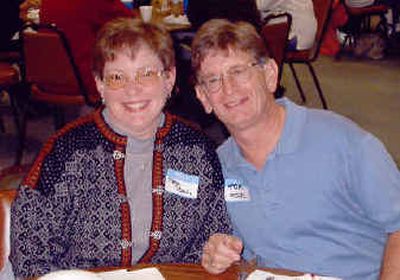RVers go to school

Dick Reed has been behind the wheel of “big rigs,” in one form or another, for 40 years—as a professional long haul truck driver and as an RVer.
“I spent so many years in truck driving it’s hard to remember,” joked Reed during a telephone interview from his office in Applegate, Calif.
What is easy to remember is that he started the RV Driving School in 1991, the first of its kind in the United States. Since then, he and his team of instructors have trained thousands of RV owners to safely operate and maneuver all types of vehicles.
Reed, and his wife Lue, will be in Moscow, Idaho, as part of the week-long Life on Wheels Conference beginning July 11 on the University of Idaho campus (registration information below).
“Confidence is the key,” said Reed. “We come at it from the point that experienced automobile drivers possess all the necessary skills” to pilot a motor home or haul a fifth-wheel trailer.
“We show people that because their RV is wider, higher, longer and heavier than their car, it will take more time to get started and to stop,” he said. “We expand their basic driving techniques to accommodate the size of rig they are handling.”
Trust your mirrors
One of the biggest challenges is learning to use and trust side mirrors, said Reed.
When driving a large RV, drivers need to use side mirrors to see anything past a 90-degree angle to their left or right.
“In a car, people are used to looking over their shoulder to change lanes or back up,” said Reed. “If you look over your shoulder in a motor home you’re looking into the kitchen.”
Most new motor homes come equipped with a set of flat and convex mirrors on each side—flat mirrors to show what is directly behind the rig and to judge distance; and convex mirrors to give a wide field of vision and to see what’s happening in the “no zone.”
“The ‘no zone,’ ” said Reed, “is the area where a vehicle can come alongside you and you can’t see them with regular flat mirrors.”
Being confident using mirrors helps with three of the greatest concerns for most drivers: staying within their traffic lane, turning onto narrow roads and backing into camp sites.
Lessons pay off
Tom and Mary Mosher of Spokane have been challenged by each of those driving situations, and more, during the 25 years of their RVing experience.
It was when the Moshers moved from a class C motor home to a 36-foot class A that Mary contacted Dick Reed’s school to set up a half-day class.
“It was a great refresher course,” said Mary. “The new motor home was 12-feet longer, it was diesel versus gas, air breaks versus regular brakes and much wider at 102-inches.”
Mary’s training came in handy last summer when the Moshers were on their way to a long-planned tour of the Maritime Provinces. Three days after leaving Spokane, Tom, the primary driver, pulled a muscle hauling something out of the lower compartment in their RV.
At 4 a.m., said Tom, “I awoke to terrible nerve damage down the front of the left leg” and off he went to a hospital emergency room in Rapid City, SD.
“Four days later,” continued Tom, “with me in a drug-induced stupor, Mary somehow got me into the motor home and drove our 35,000-pounds and 51-feet of motor home and Jeep the 1000 miles back to Spokane.”
In addition to doing all the driving during that return trip, Mary parked the rig in truck stops overnight; fueled-up twice, maneuvering to the pumps and around the big rigs; and cooked and took care of Tom.
“I don’t think I would have had the confidence to have driven the three days back,” said Mary, “if I hadn’t had the driving lessons and practiced, practiced, practiced.”
A few good hints
To view a number of driving tips from Dick Reed and the Moshers, go to the Wheel Life blog page at www.spokesmanreview.com/ blogs/wheellife/blog.asp.
For more information
“ Reed’s RV Driving School offers driving instruction packages in the owner’s RV or in a school-provided rig. The school covers how to back up, make proper lane changes, negotiate highway on and off ramps and maneuver on narrow roads.
Information on packages, locations and costs can be obtained at www.rvschool.com or through RV Driving School, P.O. Box 470, Applegate, CA 95703; or by calling (530) 878-0111.
“ The Life on Wheels Conference is scheduled for July 11-16 on the UI Moscow campus.
The registration fee of $199 per person covers courses, an Idaho Repertory Theatre ticket and evening entertainment. A $130 RV fee includes electrical hookups and water services. People who wish to dry camp (no power or water) on campus will be charged a $25 parking fee. Those attending who do not yet own RVs can stay in nearby motels.
To register or to find out answers to your questions, call toll-free 1 (866) LOW-GOGO (866-569-4646); e-mail Peggy Waterman at peggyw@uidaho.edu; or write to Life on Wheels, UI Conference Services, P.O. Box 443224, Moscow, ID 83844-3224. For detailed information about courses, check www.rvlifeonwheels.com.
Wheel question
It is said that up to 75 percent of fulltime RVers are “wired” with access to the Internet, cellular phones and global positional systems. What type of equipment do you use to stay connected while traveling?